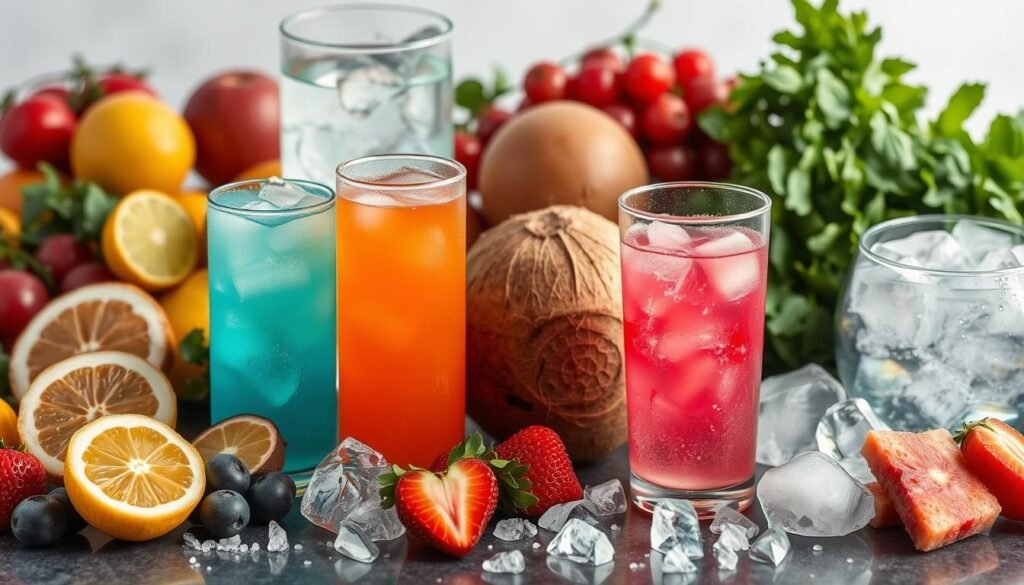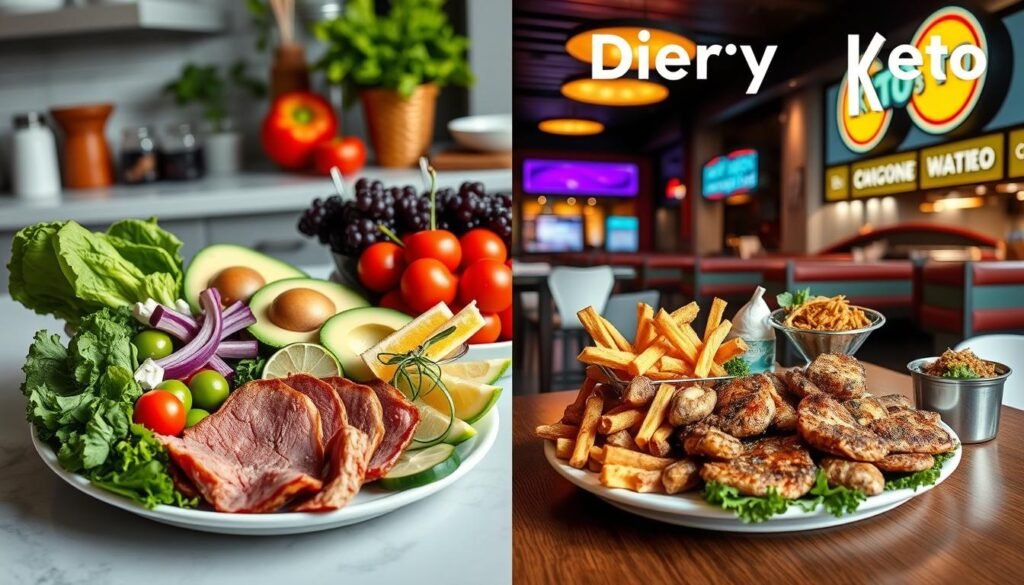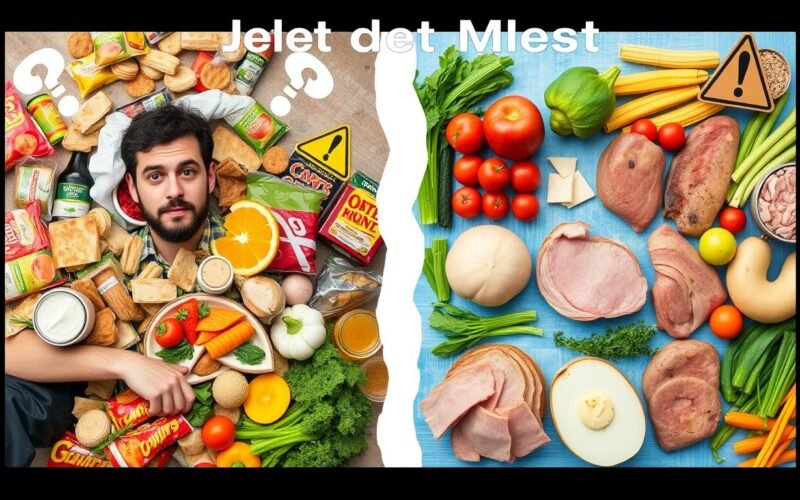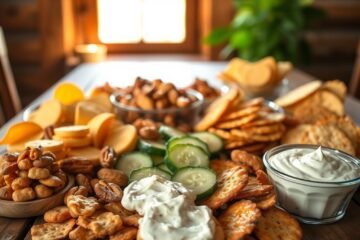Did you know 51% of people on keto diets eat hidden carbs without realizing it? This fact shows a big mistake that can stop your weight loss. Knowing these top 5 keto mistakes to avoid in your diet is the key to success on your healthy life journey.
The keto diet is popular for quick weight loss and better health. But, many newbies struggle with mistakes that slow them down or make them quit. It’s important to avoid these pitfalls.
Knowing these common errors can help you succeed on your keto weight loss journey. Mistakes like not counting hidden carbs or not drinking enough water can mess up your diet. These mistakes can keep you from getting into ketosis and slow your progress.
In this guide, we’ll cover the top 5 keto mistakes to avoid. By avoiding these mistakes, you’ll be more likely to reach your health and weight loss goals. You’ll also enjoy the benefits of ketosis.
Fix your approach with our Keto beginner’s guide and keep on track with low-carb transition tips.
Key Takeaways
- Hidden carbs can sabotage your keto diet progress
- Proper hydration is essential for keto success
- Balancing macronutrients is crucial for maintaining ketosis
- Reading food labels carefully helps avoid unexpected carb sources
- Consistent dietary habits yield better long-term results
- Seeking professional advice can prevent common nutritional mistakes
Understanding the Fundamentals of Ketogenic Diet
The ketogenic diet focuses on eating a lot of fat, some protein, and very few carbs. It aims to make your body burn fat for energy instead of carbs.
What Makes Keto Different from Other Diets
Keto is different because it encourages eating more fat. The diet’s macronutrient breakdown is:
| Macronutrient | Percentage of Daily Calories |
|---|---|
| Fat | 70-75% |
| Protein | 20-25% |
| Carbohydrates | 5-10% |
This unique mix of nutrients helps your body use fat as its main energy source. This can lead to weight loss and other health benefits.
The Science Behind Ketosis
When you cut down on carbs (usually below 50 grams a day), your body goes into ketosis. In this state, your liver turns fat into ketones. These ketones are used by your brain and body for energy.
Setting Realistic Expectations
When starting keto, it’s important to have realistic goals. You might lose water weight quickly at first. But real fat loss takes longer. Some people might also experience “keto flu,” which includes headaches, fatigue, and muscle cramps.
Remember, everyone’s body responds differently to dietary changes. Be patient and consistent with your keto journey for the best results.
To keep your energy up and avoid nutrient deficiencies, eat healthy fats, drink plenty of water, and include foods rich in electrolytes in your meals. With careful planning and dedication, you can successfully follow the keto diet and enjoy its benefits.
Top 5 Keto Mistakes to Avoid in Your Diet Journey
Starting a keto diet is thrilling, but it’s easy to make common mistakes. Let’s look at the top five ketosis stumbling blocks that beginners often face.
First, many people miscalculate their carb intake. Hidden carbs can sneak up on you, ruining your keto plan. Second, forgetting about electrolytes can cause the “keto flu.” A 2020 study found 54 symptoms, like headaches and fatigue, linked to this condition.
Third, eating too much fat without watching calories can slow down weight loss. Remember, keto isn’t a license to eat all the fats you want. Fourth, only focusing on macros without considering food quality can lead to nutritional gaps.
Lastly, not planning your meals can make sticking to keto hard. Meal prep is key, as keto often means making most meals from scratch to keep macros in check.
“Avoiding these keto beginner mistakes can significantly improve your success and sustainability on a ketogenic diet.”
Knowing these pitfalls helps you navigate your keto journey better. It’s not just about cutting carbs. It’s about finding a balanced, lasting way to live your new lifestyle.
The Hidden Carb Trap
Following the keto diet can be challenging, especially with hidden carbs. These sneaky carbs can sneak into your diet without you noticing. Let’s explore how to stay on track with your keto diet.
Identifying Sneaky Carb Sources
Hidden carbs hide in unexpected places. Salad dressings, sauces, and some shellfish can be high in carbs. To stay in ketosis, keep your carb intake between 20-50 grams. This is about 5-10% of your daily calories.
Reading Labels Effectively
Learning to read keto labels is key. Look at total carbs, not just net carbs. Some “keto-friendly” foods may still have hidden carbs. Even small amounts can throw you out of ketosis.
Common Food Items with Unexpected Carbs
Watch out for these surprising carb sources:
- Some vegetables (e.g., carrots, onions)
- Dairy products (milk, flavored yogurts)
- Processed “keto” snacks
- Nuts and seeds (in large quantities)
| Food Item | Carbs per 100g | Keto-Friendly Serving |
|---|---|---|
| Carrots | 10g | 1-2 baby carrots |
| Greek Yogurt (plain) | 3.6g | 1/2 cup |
| Almonds | 22g | 1 oz (23 almonds) |
| Onions | 9g | 1-2 tbsp chopped |
By being careful about hidden carbs and learning to read labels, you can avoid too many carbs. Use a food tracking app to monitor your carb intake and stay in ketosis.
Electrolyte and Hydration Challenges
Starting a keto diet can bring unexpected hurdles. One of the biggest is maintaining proper electrolyte balance and hydration. These challenges often lead to what’s known as keto flu.
Understanding Keto Flu
Keto flu is a set of symptoms that can hit you like a truck when you first start your keto journey. Headaches, fatigue, and dizziness are common signs. These usually pop up within the first week as your body adjusts to burning fat instead of carbs.

Essential Minerals for Keto Success
To combat keto flu and avoid nutrient deficiencies, you need to focus on key minerals. Sodium, potassium, and magnesium are your new best friends. These electrolytes help your body function smoothly during the transition to ketosis.
Proper Hydration Strategies
Keto hydration is more than just drinking water. It’s about replacing what you lose. Aim for at least 64 ounces of water daily. Add a pinch of salt to your meals or sip on bone broth to replenish sodium. Leafy greens and avocados are great for potassium. For magnesium, try nuts or seeds.
| Electrolyte | Food Sources | Daily Goal |
|---|---|---|
| Sodium | Salt, bone broth | 3000-5000 mg |
| Potassium | Avocado, spinach | 3000-4700 mg |
| Magnesium | Almonds, pumpkin seeds | 300-400 mg |
Remember, your body sheds more water on keto. This increased fluid loss can throw your electrolytes out of whack. Stay on top of your intake to feel your best and avoid the dreaded keto flu.
The Protein Misconception
Many people get the wrong idea about protein on a ketogenic diet. Even though fat should be the main part of your calories, protein is still very important. It helps with your health and fitness goals. Let’s fix some common wrong ideas about keto protein intake.
On a keto diet, you should get about 20-30% of your calories from protein. This means about 1 gram per kilogram of body weight for most people. If you do strength training, you might need up to 2 grams per kilogram. Don’t think that eating less protein will keep you in ketosis. You need enough protein to keep your muscles strong and stay healthy.
Protein is very important for changing your body shape and keeping muscle when you lose weight. It’s not just about fat on a ketogenic diet. You need to find a balance. Use tools to track your macros and make sure you get enough protein in your keto meals.
| Activity Level | Protein Intake (g/kg body weight) |
|---|---|
| Sedentary | 0.8 – 1.0 |
| Moderately Active | 1.0 – 1.6 |
| Highly Active/Strength Training | 1.6 – 2.0 |
While fat is the main focus of the keto diet, protein is the real hero. Don’t ignore this important nutrient. Your body will be grateful for the right balance of protein on a ketogenic diet.
Quality Over Quantity: Clean vs. Dirty Keto
When you’re on a keto diet, it’s key to focus on the quality of your food, not just the numbers. This makes a big difference between clean keto and dirty keto, two ways to live the keto lifestyle.
Choosing the Right Fats
On a clean keto diet, you choose healthy fats like extra virgin olive oil, coconut oil, and grass-fed butter. These fats are full of good stuff and help keep you healthy. Dirty keto, however, might use processed oils that are bad for you.
Importance of Nutrient-Dense Foods
Clean keto is all about eating whole, nutrient-rich foods. This means lots of non-starchy veggies, high-quality proteins, and natural fats. Eating this way makes sure your body gets all the vitamins, minerals, and antioxidants it needs.

Avoiding Processed Keto Products
Dirty keto often falls into the trap of using processed “keto-friendly” products. These can have hidden carbs or unhealthy stuff in them. Sticking to whole foods helps you stay healthy and avoid missing out on important nutrients.
| Clean Keto | Dirty Keto |
|---|---|
| Whole, unprocessed foods | Processed, convenience foods |
| Natural, healthy fats | Processed oils |
| Nutrient-dense vegetables | Limited vegetable intake |
| High-quality proteins | Any protein source |
Choosing clean keto is more than just losing weight. It’s about feeding your body right. This way, you’re not just losing weight, you’re keeping your body healthy for the long run. It makes your keto journey better and more fun.
The Importance of Proper Planning
Keto success depends on good planning. Mastering keto meal prep, making a detailed keto shopping list, and handling keto social challenges are key. These steps help you achieve long-term success.
Meal Prep Strategies
Effective keto meal prep saves time and keeps you on track. Cook low-carb meals in batches for the week. Focus on dishes that are 70-75% fat, 20-25% protein, and only 5-10% carbs.
Also, prepare 2-3 cups of low-carb veggies daily. This helps maintain fiber intake.
Shopping List Essentials
Your keto shopping list should focus on high-fat, low-carb foods. Include leafy greens, avocados, eggs, and olive oil. These foods help you reach 150g of fat daily on a 2000-calorie diet.
| Food Category | Examples | Net Carbs per 100g |
|---|---|---|
| Vegetables | Avocado, Broccoli, Cauliflower | 2g, 4g, 3g |
| Proteins | Eggs, Chicken, Salmon | 1g, 0g, 0g |
| Fats | Olive Oil, Butter, Coconut Oil | 0g, 0g, 0g |
Managing Social Situations
Keto social challenges can be tough. Research restaurant menus before going out or bring keto-friendly dishes to parties. Remember, to stay in ketosis, limit carbs to 20-50 grams per day.
Planning helps you make smart choices and stay on track with your keto goals.
Tracking and Monitoring Progress
Tracking your keto progress is key to success. While watching ketone levels is helpful, don’t focus only on them. As you get better at using ketones, their levels might drop. Look at how your health, energy, and body shape change instead.
For better weight loss tracking, weigh yourself once a week. This helps you avoid getting too caught up in small changes. Use body measurements or DXA scans for more precise tracking. Remember, losing weight isn’t always steady, and other health signs matter too.
- Body weight (weekly)
- Body measurements (monthly)
- Energy levels (daily)
- Mood and mental clarity (daily)
- Sleep quality (daily)
A study on keto diet participants showed great results:
| Metric | Result |
|---|---|
| Improved wellbeing | 100% |
| Increased energy levels | 100% |
| Positive mood | 94% |
| Reduced sugar cravings | 82% |
| Achieved weight loss target | 65% |
Keep in mind, ketone monitoring is just part of the picture. Focus on your overall health and happiness as you keep going on your keto path. By tracking different parts of your progress, you’ll understand how the keto diet affects your body and life better.
Conclusion
Starting a ketogenic diet is more than just cutting carbs. Success on the keto diet depends on avoiding common mistakes. About 60% of newbies face the “keto flu” due to not enough electrolytes. Stay hydrated and add potassium and calcium to your diet.
Choosing quality over quantity is crucial for a long-term keto lifestyle. Focus on whole, nutrient-rich foods instead of processed ones. Studies show that eating whole foods can help you stick to keto for longer. Include keto-friendly veggies and fruits like avocados, spinach, and strawberries for a balanced diet.
Good planning is essential for keto diet success. Meal prep helps avoid bad food choices when you’re hungry. Also, be patient with your progress. Initial weight loss is fast, but about 70% of dieters see ups and downs rather than steady weight loss. Remember, the scale doesn’t show the whole picture of your health journey.
Finally, getting advice from a healthcare professional is wise, especially for long-term keto plans. They can adjust your diet based on your health, making sure your keto lifestyle works for you.




